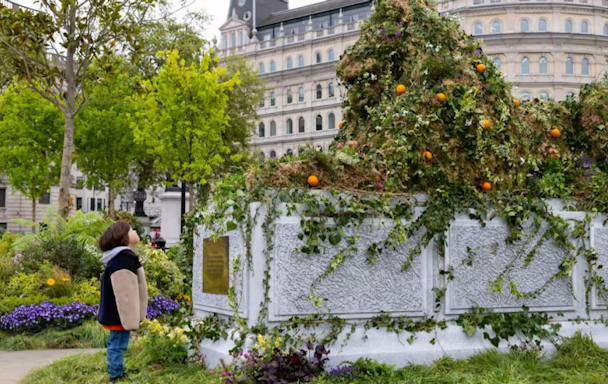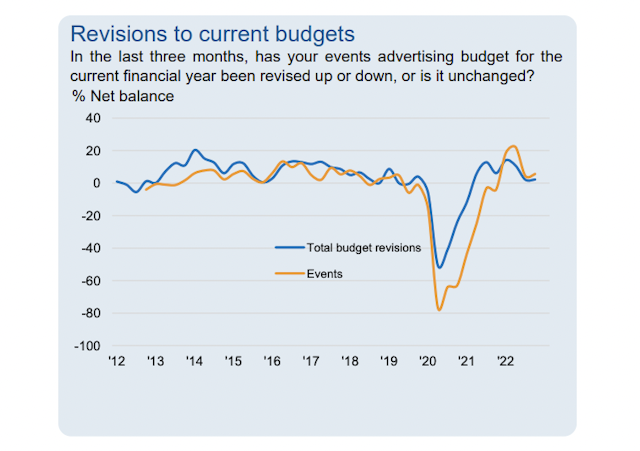‘Wasteful and inefficient’: is experiential marketing adland’s secret polluter?
Since Covid-19 restrictions were lifted, advertisers have poured spend into events and experiential marketing but sustainability experts say bad practice comes at a cost to the planet.

Innocent came under fire for its pop-up in Trafalgar Square
According to the IPA Bellwether report, released in January of this year, the first three quarters of 2022 saw events budgets spike as companies re-engaged with clients following the relaxation of Covid-19 lockdown rules.

Nick Marks, founder of both the positive impact agency, Pie Factory, and sustainable events agency, Ecobooth, tells The Drum, that this moment offered an opportunity for the industry to come good on the promises it made during the height of the pandemic.
“The industry kept itself relevant during Covid by talking about sustainability, everyone kept saying we were going to build back better,” said Marks. “But within days of restrictions lifting, everyone was back to normal.” Agencies, he said, would cite hits to client budgets as an excuse to turn away from sustainability commitments.
Advertisement
Experiential’s hidden carbon cost
Exactly how experiential and events marketing contributes to global warming is multifaceted, explains Simon Evans, sustainability director at Pie Factory. Firstly, he says, is the simple fact that they are temporary and not permanent. “So unlike construction where you’re building things to last for a long time, in experiential you’re talking two days of use for a lot of high-carbon materials and an awful lot of other emitting factors.”
He says the impact of experiential events and installations is a combination of the carbon used to create, and then destroy the materials used. “It boils down to material waste and inefficiency, in terms of logistics,” he says.
According to Marks, large events like festivals are where we can see some of the worst practice. “It’s a wasted opportunity on many levels. You’ve got the perfect audience to tell the right message to; hundreds of thousands of kids and young adults who want to learn more, but who can go along and buy a £5 meal deal wrapped in plastic that they then dump in a field.” (Back in 2018, Ecobooth estimated that UK events would result in over 100,000 tonnes of waste being burned or ending up in landfill.)
Advertisement
While Anna Abdelnoor, co-founder of events, industry body, Isla, points to “seasonal and trends-driven” sectors like fast fashion, as well as traditionally high-carbon sectors like transport.
However, the issue is that the carbon impact of individual experiential campaigns and events is hard to measure. Unlike the carbon calculators currently popping up for advertisers to measure the impact of other sectors like media and out-of-home, carbon emissions in events and experiential are largely unaccounted for and unregulated.
“Without the tools, resources and money invested into the process, it’s hard to ‘build back better’ post-Covid and [the industry] risks falling back into old habits,” says Abdelnoor.
“Reassuringly, we are seeing a change in mindsets from individuals that looks to prioritize environmental issues. This needs to be supported by effective governance and regulation to reach a point of true sustainability,” - the introduction of which Abdelnoor calls “painfully slow.”
Suggested newsletters for you
In the meantime, businesses that wish to reduce the carbon impact of event and experiential campaigns can look at the direct impact of hosting them, suggests Abdelnoor, “and quantify the carbon footprint by measuring travel, material usage and energy consumption, and so on.” This can be used to develop impact reduction strategies, which Isla says it is currently looking into.
But Evans says the harsh reality is that there are no shortcuts when it comes to reducing emissions in the events and experiential space, citing a skills and education gap as well hesitancy to truly integrate sustainability as part of the issue. “Working with sustainability professionals is what’s needed,” to plug this, he says. “And not just integrating them into your team, but into everything you do.”

